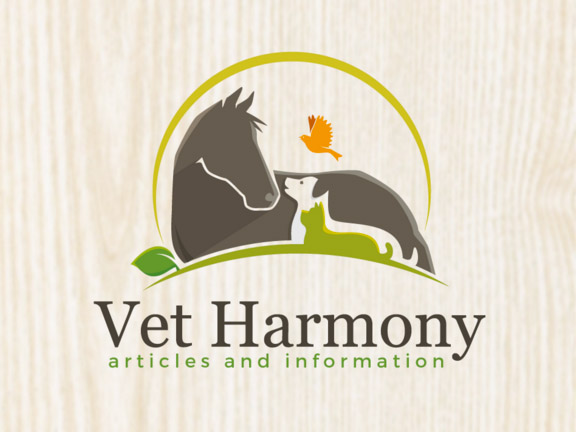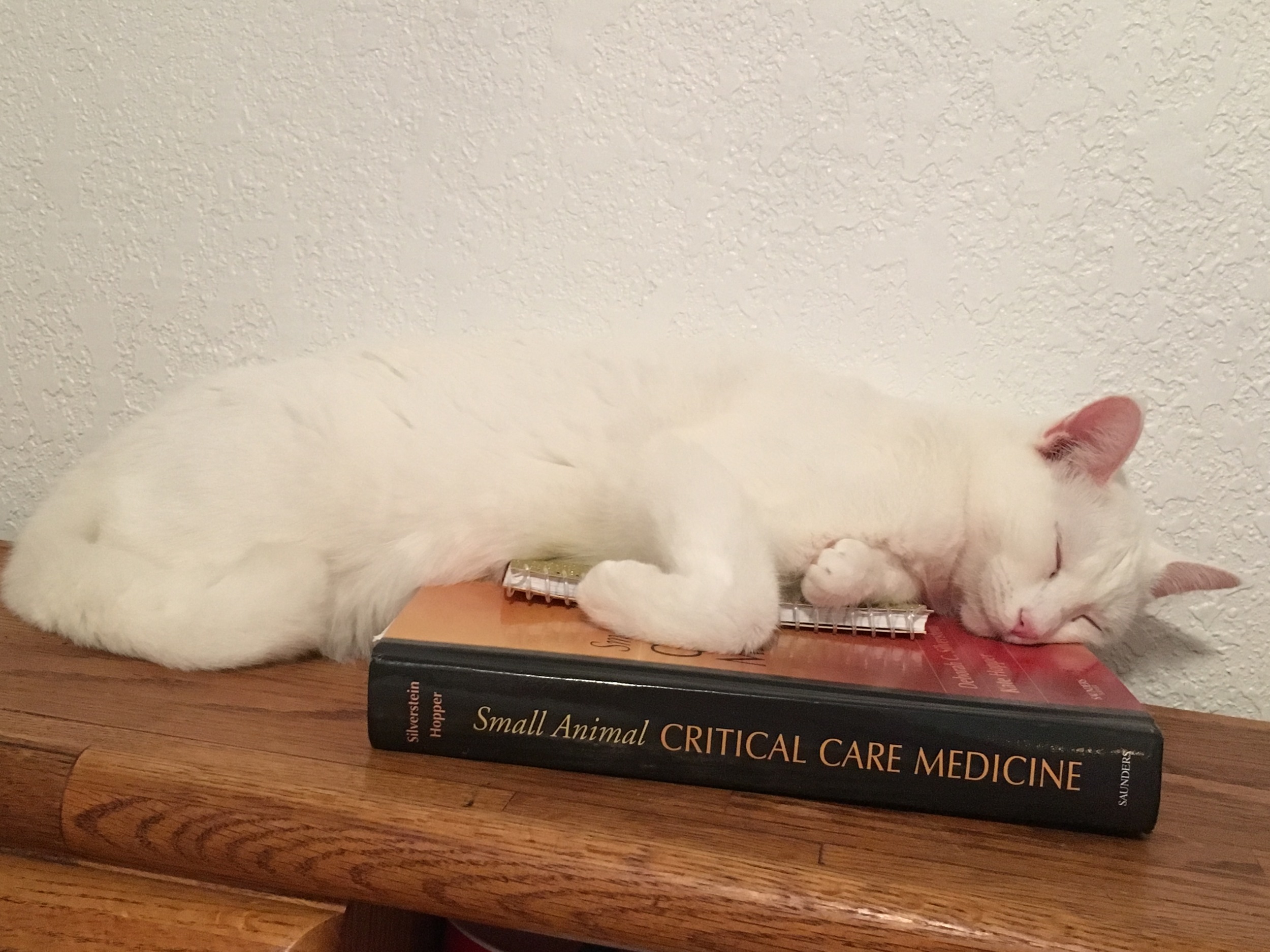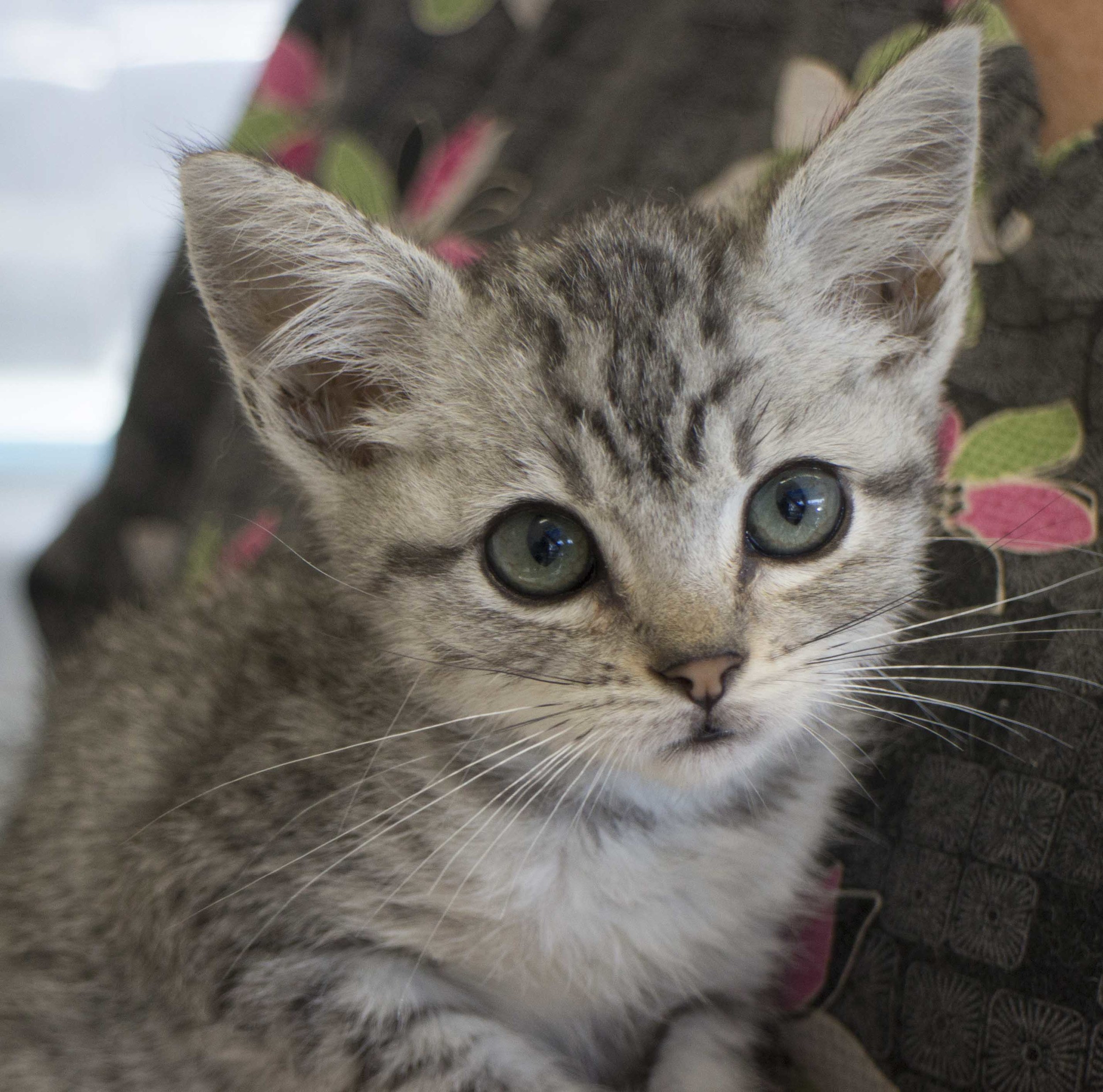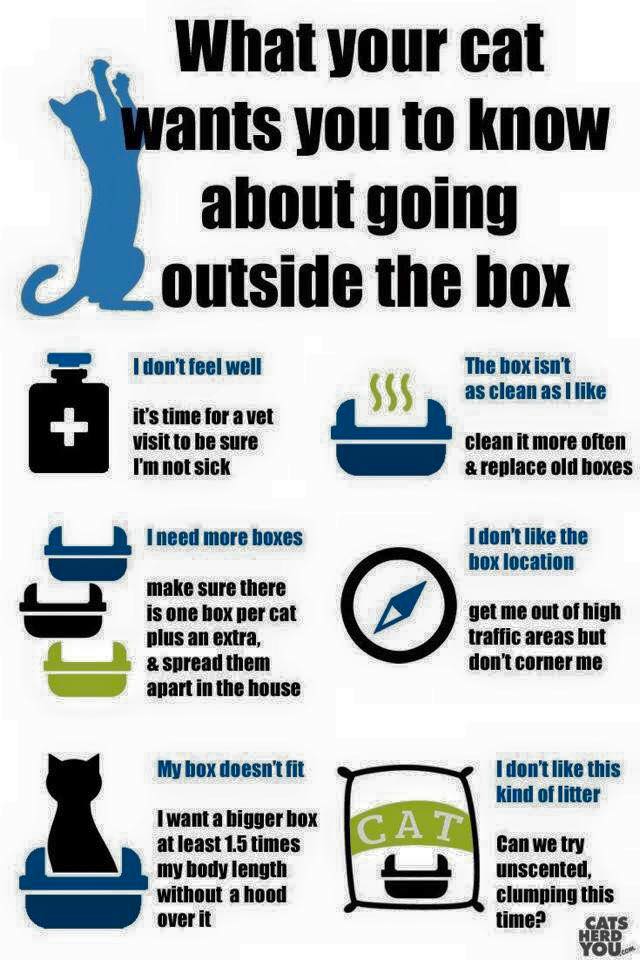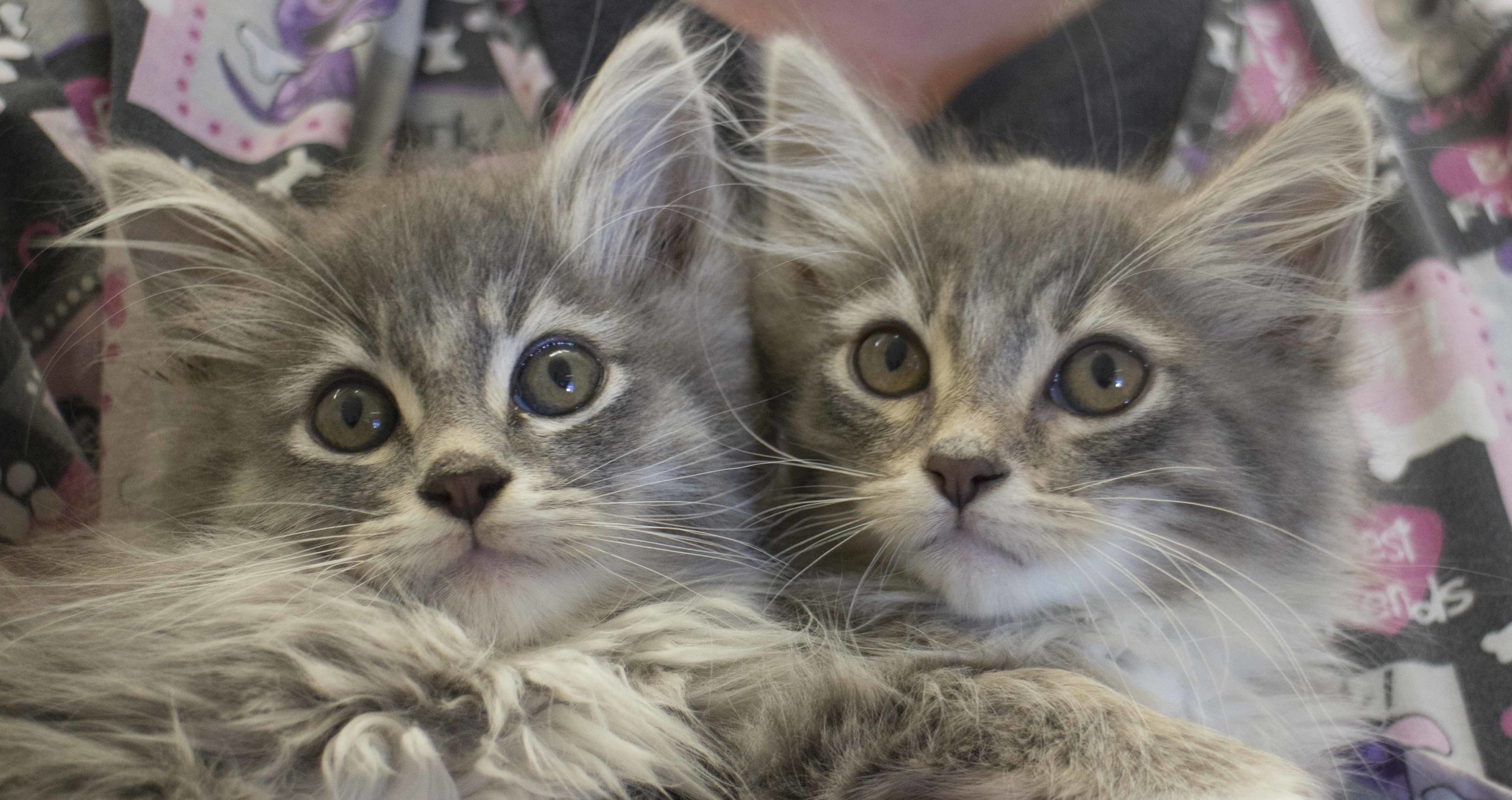“You are loving your pet to death!” This is a common phrase veterinarians tell pet owners. We know you love your pets and you want to make them happy. Providing food for your animals is one of the best ways to show your love for your pet. They respond with wagging tails and kisses to your offerings of food, and they learn to become more persuasive, and adorable in their requests for food.
Unfortunately, obesity is a huge problem for pets and has been shown to decrease their lifespan. One study in Labrador retrievers showed that slimmer dogs lived a median of 2.5 years longer than overweight dogs. Obesity causes problems such as joint disease, diabetes and breathing problems, and could possibly increase their risk of certain types of cancer.
Just as with people, the increasing availability of highly palatable, high calorie foods and a more sedentary lifestyle increases the likelihood that your pet will become obese. Today, more than half of dogs are considered overweight, while 20% are considered obese. The good news is, this is a disease that usually costs nothing to treat!
Weight Loss Plan
Wouldn’t it be great to have a personal chef, just like the rich and famous? Someone who would prepare your meals for you so you could achieve your own weight loss goals? Well, you can be that personal chef for your pet, without having to spend hours in the kitchen! All it takes is a little knowledge and commitment. This article will show you step by step, how to assess how much your pet has to lose, how much to feed and how long it will take.
It is recommended that pets lose no more than 2% of their body weight per week. Ideally, we will shoot for 1% per week. Losing more than that could cause the pet’s metabolism to slow down, they will feel hungry, and could lose muscle instead of burning fat. Decreasing the diet too much results in adaptive down regulation of the resting energy requirement which results in weight rebound, or the propensity to regain after a successful weight loss program.
Consulting A Veterinarian Is The Best Way To Get Started
It is best to spend some time with a veterinarian to work out a good weight loss plan, but you can start the process at home on your own too. If you feel you are not feeding your dog very much at all, but they seem to be keeping the weight on, then it might be best to consult a veterinarian to help determine whether a disease such as hypothyroidism might be the problem.
Prescription weight loss diets available that are low in calories but high in nutrition, to ensure that your pet is getting enough vitamins and minerals while reducing their caloric intake. If you simply reduce the volume of the current food they are eating too much, their diet could be deficient in vitamins and minerals.
If your dog’s insatiable appetite becomes too much of a problem, a prescription medication called Slentrol (www.slentrol.com) is available that may help when all else has failed.
Know Your Pet’s Body Condition Score (BCS)
Just like in people, the number on the scale doesn’t matter as much as the body composition, the balance of fat and muscle. The body condition score assesses the amount of fat build up on your pet’s body, and is a way to numerically express your pet’s body composition. There are 2 scales to assess body condition; the 5 point scale in which the ideal is a 3, and the 9 point scale in which an ideal body condition is a 4/5. I usually will refer to the 9 point scale.
Ideally, you want the ribs to be easily felt, and when viewed from above, your pet will have a nice waist visible behind the ribs. When viewed from the side you will see a nice tuck up right in front of the hind legs.
Research has shown that in dogs BCS is related to body fat percentage, with a body fat of 15-25% being ideal. However, this can be affected by breed. For example, Greyhounds that have a BCS of 5, may only have 7% body fat, while Huskies and Rottweilers have a higher percentage of body fat with an ideal BCS. Using the 5 point scale, each point represents a 10% change in percent body weight from the ideal, while using the 9 point scale each point represents a change in 5% body weight from the ideal.
Overweight dogs are considered 10-20% above ideal body weight, while dogs are considered obese if they are 20% above ideal body weight.
Click here to see The Ohio State University’s BCS Chart (https://vet.osu.edu/vmc/companion/our-services/nutrition-support-service/body-condition-scoring-chart)
Click here to see The World Small Animal Veterinary Association’s chart (http://www.wsava.org/sites/default/files/Body%20condition%20score%20chart%20dogs.pdf)
Also check out Dr. Sophia Yin’s article on how to body condition score your pet (http://drsophiayin.com/blog/entry/is-your-dog-fit-or-fat-learn-how-to-body-condition-score-him)
To really geek out on body condition scoring, check out this article in Clinician’s Brief (http://www.cliniciansbrief.com/sites/default/files/sites/cliniciansbrief.com/files/BodyConditionScoresforDogs.pdf)
The Do It Yourself Approach
Take an account of how many calories a day your pet is currently getting. Calories listed on the nutrition label on your food is the same as kilocalories (kcal). To start, get an accurate measurement of the quantity of food your pet is currently getting, measure dry food in measuring cups, or on a scale. You can usually google “How many kcal in ______ food” to find out how many calories are in your dog’s food if you can not find this information on the label.
For example, lets say I feed my dog Royal Canin Medium Adult dry dog food. I find on Royal Canin’s website that this food contains 336 kcal per cup.
Lets say my dog weighs 26lbs, and I have been feeding my dog 1 cup of food in the morning and 1 cup of food at night. Therefore, my dog has been getting 672 kcal per day. I am feeding according to what the feeding guide says on the back of the bag for my dog’s size assuming he has a medium level of activity.
If you were feeding any additional food, treats, or human food you would need to add this into the number of kcal per day you are feeding.
Do It Yourself Calculations: How Much Should I Feed My Pet (Dog Example)
In order to determine how much you should feed your pet you need to calculate your pet’s Resting Energy Requirement (RER). This is the energy required to perform basic body functions such as digestion, heart, brain and respiratory functions.
The formula for calculating RER is 70 multiplied by your pet’s body weight in kilograms to the power of 0.75.
RER= 70*(body weight in kg)^0.75 = kcal/day
to convert lbs to kg, divide your pet’s body weight in lbs by 2.2.
kg=lbs/2.2
So for example my 26 lb dog is 11.8kgs and his RER is:
RER=70*(11.8)^0.75 = 446 kcal per day
Using an iPhone makes this calculation easy. If it has been a while since you’ve thought about order of operations I will let you know you are going to calculate the exponent first, then multiply by 70 (Remember PEMDAS from school?). So in my iPhone I would plug in 11.8 then press the x^y button, then multiply by 70.
If you really did not want to calculate using exponents, you can use the following linear equation:
RER = 30*(ideal body weight in kg) + 70 = kilocalories to be feed per day.
However, this is only accurate for medium sized pets. This is not accurate for very large or small pets.
Normally, we would calculate how much to feed based on Maintenance Energy Requirement (MER), the energy requirement of a moderately active dog in a thermoneutral environment.
For adult dogs:
MER (intact adult): 1.8*RER = _______ kcal/day
MER (neutered adult): 1.6*RER = _______ kcal/day
For adult cats:
MER (neutered cat): 1.2*RER=______kcal/day
So for my neutered 26 lb dog, this would be 714 kcal/ day, which is way more than he has been getting! However, every pet is different, some are more active than others, and have a different metabolism, which is why many pets will gain too much weight if fed according to MER.
For weight loss you can feed just RER to start.
You can go as low as 20% less than RER.
RER*0.8= ____kcal/day
Now I look at my dog carefully, and the BCS chart and I determine that my dog is a 7/9. So, he is about 10% overweight and could lose about 2.5 lbs.
My dog has been getting 672 kcal per day and RER is 446 kcal per day. This would be a huge and sudden reduction in calories for my dog. I do not want to decrease the amount I have been feeding him too much all at once, or else this may result in him being too hungry, adaptive down regulation of his resting energy requirement, as well as possible muscle loss, which could result in rebound weight gain after stoping the diet. Instead, I am going to gradually reduce how many calories he is going to get instead.
I will reduce his diet by 20% and then re-weigh him and assess his BCS in 2 weeks. Instead of feeding 672 kcal/day I will feed:
672kcal*0.80=537.6 kcal/day
Now remember, the Royal Canin dog food I was feeding was 336 kcal/cup, so I am going to calculate how much to feed my dog by dividing my new kcal/day by the calories per cup of food:
kcal/day/kcal/cup = cups/day
537.6kcal/day/336 kcal/cup = 1.6 cups/day.
If I look on the feeding guidelines on the bag, I see that they recommend 1 3/4 cups a day for a dog of my dog’s weight assuming a low level of activity, which is a little bit higher than what I plan on feeding now. But, my dog is overweight, and fat requires less energy to maintain, so it should be expected that I will feed less food then the bag says. I will also start walking 30 minutes a day with my dog, he has no health problems that would limit his ability, and this is a small increase from his usual activity. You should always take into consideration your pet’s health problems and current level of activity when considering an exercise plan, and start out slow.
If the amount of food I have to feed to achieve weight loss is significantly less than what the feeding instructions on the bag say, I would be concerned that the diet I am feeding may be to deficient in nutrients, and may consider switching to a low-calorie diet, or diet formulated for weight loss that has a higher concentration of nutrients and lower concentration of calories.
When I re-weigh my dog in 2 weeks, I will also re-assess his body condition score. if I find that he has not lost 2% of his body weight, or he has gained weight, I will also consider his BCS, and if his BCS and weight combined aren’t headed in the right direction I will reduce his food by another 20% or to 20% less than RER (0.8*RER). In this case, a further 20% reduction would be 430 kcal/day. I do not want to reduce his food any lower than 20% less than RER without consulting a veterinarian.
Therefore, his new daily ration will be:
430 kcal/day / 336 kcal/cup = 1.3 cups/day
Again, I will continue exercise and re-weigh him in 2 weeks. If he has finally achieved a 2% reduction in body weight and his BCS looks better, I can expect his entire weight loss plan to take 10 weeks to complete. If he starts losing weight too rapidly, I may increase his food by 10-20% depending on what I am seeing. It is important to continue to re-weigh AND assess BCS every 2 weeks to ensure that weight loss is not occurring too rapidly.
Once ideal body condition is achieved, I will have to determine an appropriate balance of food and exercise to maintain that body condition.
How to select the best food for your pet? Visit WSAVA Global Nutrition Committee: Recommendations on Selecting Pet Foods (http://www.wsava.org/sites/default/files/Recommendations%20on%20Selecting%20Pet%20Foods.pdf)
If you feel like digging deeper into nutrition, please visit the WSAVA Global Nutrition Committee’s Nutrition Tool-Kit (http://www.wsava.org/nutrition-toolkit)
Read WSAVA’s The Savvy Cat Owner’s Guide: Nutrition on the Internet (http://www.wsava.org/sites/default/files/nutrition%20on%20the%20internet%20cats.pdf)
Read WSAVA’s The Savvy Dog Owner’s Guide: Nutrition on the Internet (http://www.wsava.org/sites/default/files/Nutrition%20on%20the%20Internet%20dogs.pdf)
Tips For Feeding In Multi-Pet Homes
Its not uncommon to have a situation where one pet is obese and the other is thin. The obese pet will eat both pet’s food! Unfortunately, you have to separate them, and you have to pick up the thin pet’s food or put it somewhere where the obese pet can not get to it.
Sometimes, this is easier with cats. If the thin cat can jump up high where the obese cat cannot, you can leave food for the thin cat up high on a shelf, counter or book case.
You can also try a “MeowSpace” (http://meowspace.biz) which is a box with an opening that is controlled by your pet’s tag or microchip that allows only the specified pet to enter.
Another device called “SureFlap” (https://www.sureflap.com/en-us/pet-feeder/microchip-pet-feeder) can work well for both dogs and cats. With this device, the lid to the food bowl only opens when the correct pet approaches.
Exercise
Daily exercise is important for weight loss, but if your pet has joint disease, respiratory disease or other problems related to being overweight. It is best to carefully assess your pet’s comfort level before making the exercise program too strenuous.
You have to be creative when coming up with an exercise plan for your cat. Find out what they like. Laser pointers and fishing-line type toys can help encourage them to move around. If you feed kibble, you can put it in a toy like an “Eggserciser” which is a toy they can play with and the kibble slowly falls out. Click here for an example: http://www.amazon.com/Petsafe-SlimCat-Meal-Dispensing-Blue/dp/B0018CG40O.
Snacks
Highly palatable treats make great rewards for training, but they are usually high in calories. Instead, you can take a portion of your pet’s daily ration and use it as snacks and as food reward during training. Low calorie foods like carrots also make great treats for dogs and they enjoy the crunching. Of course, stay away from grapes, raisins, chocolate, macadamia nuts and other foods that can be toxic to dogs. Snacks should be limited to less than 10% of total Calories per day.
Take Action
weigh your pet every 2 weeks
re-assess your pets body condition score every 2 weeks
stick to the plan, avoid extra snacks
stick to an exercise program appropriate for your dog’s age, breed, and ability
communicate the plan to family members
consult a veterinarian
Links:
http://www.wsava.org/nutrition-toolkit
http://www.veterinarypartner.com/Content.plx?P=A&A=3082
UC Davis Nutritional Management Of Weight http://www.vetmed.ucdavis.edu/vmth/small_animal/nutrition/client_info_sheets/weight.cfm
http://drsophiayin.com/blog/entry/is-your-dog-fit-or-fat-learn-how-to-body-condition-score-him
